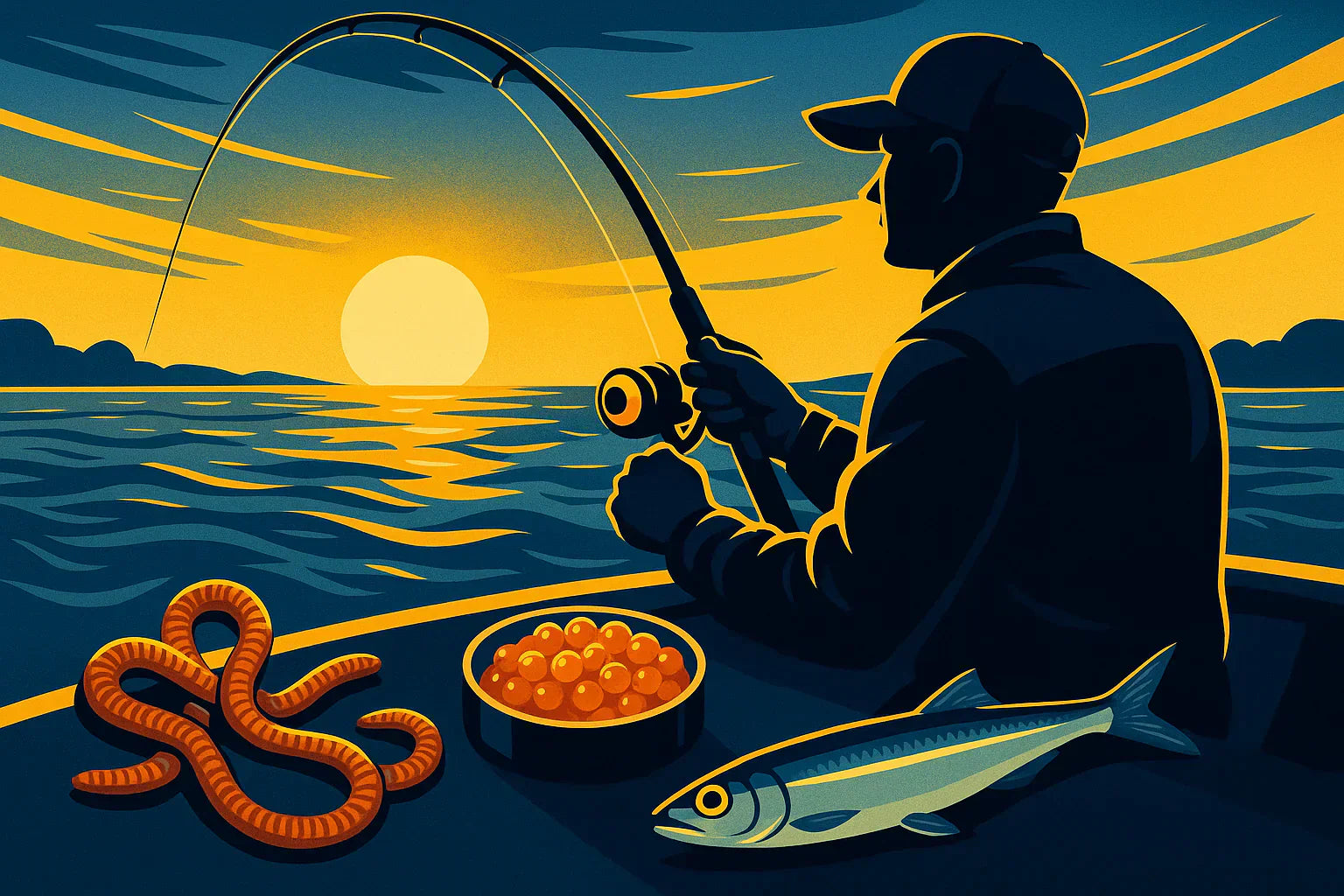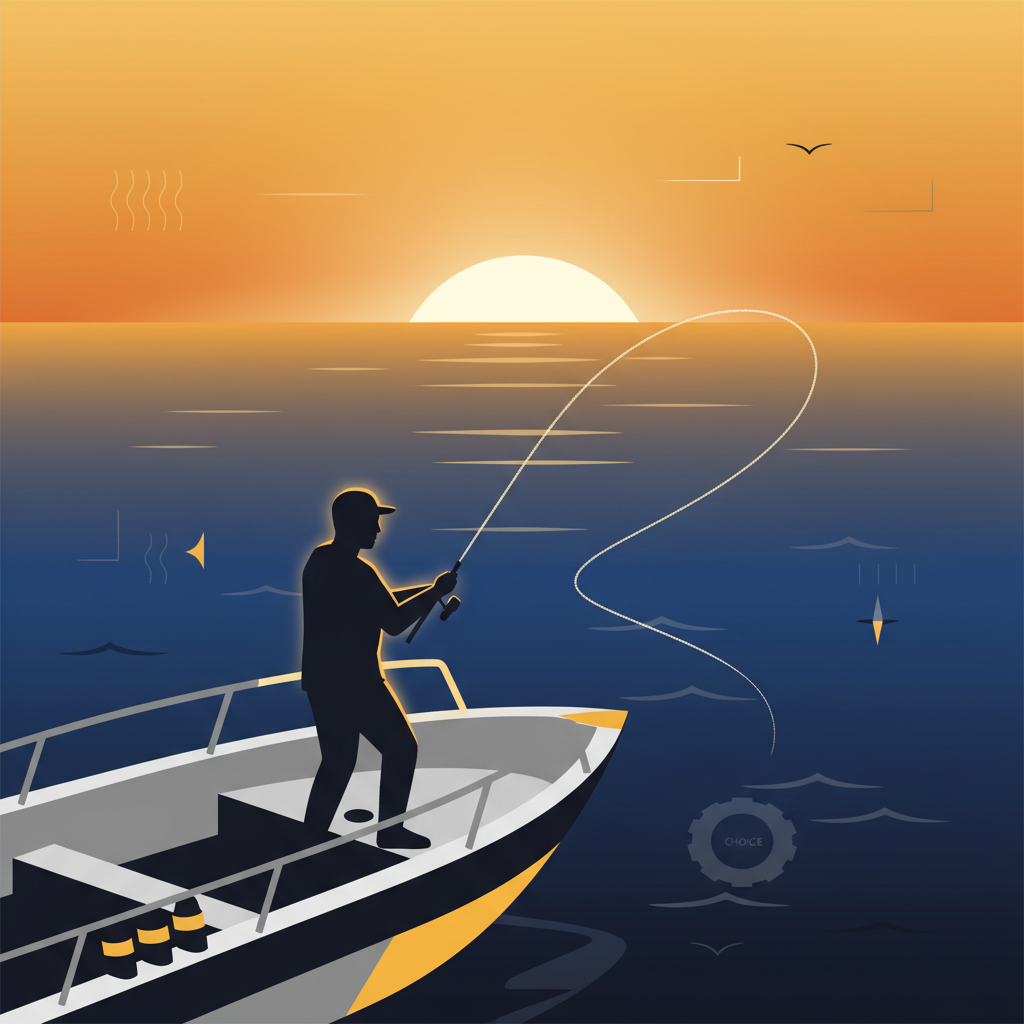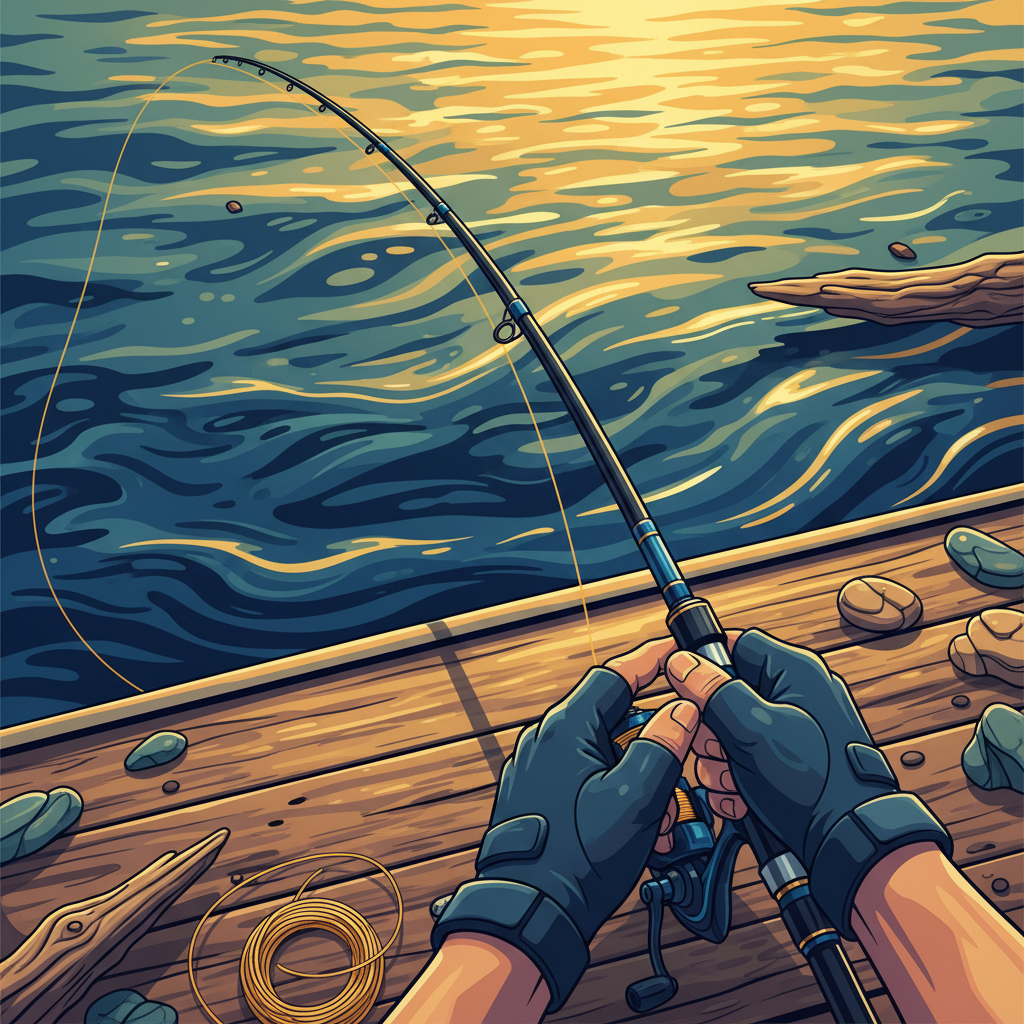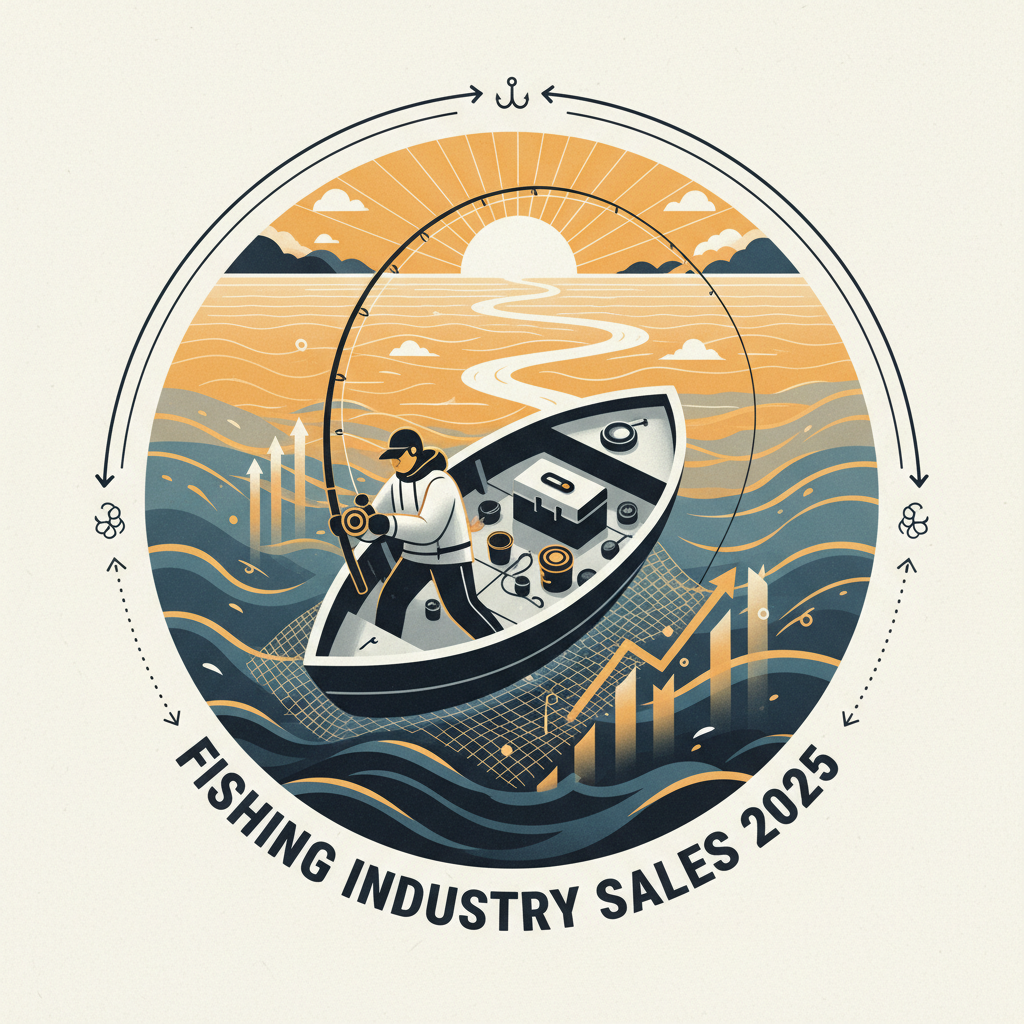Your Cart is Empty
sturgeon fishing baits
Quick Answer: The best sturgeon fishing baits are salmon roe, lamprey, nightcrawlers, shrimp, and crawfish. These scent-heavy baits trigger sturgeon's powerful feeding instincts and work consistently across different seasons and waters.
Introduction to Sturgeon Fishing Baits
Sturgeon fishing baits separate the weekend warriors from the guys who actually land these prehistoric giants. After decades chasing everything from Gulf Coast tarpon to Great Lakes kings, I can tell you that sturgeon are unlike any other fish you'll target—and your bait selection better reflect that reality.
Key Takeaways
- The best sturgeon fishing baits include salmon roe, lamprey, nightcrawlers, shrimp, and crawfish.
- Scent-heavy baits are effective because they trigger sturgeon's powerful feeding instincts.
- These baits work consistently across different seasons and types of water.
- Sturgeon fishing requires specialized bait selection distinct from other types of fishing.
- Landing sturgeon demands more skill and knowledge than typical weekend fishing trips.
Table of Contents
- Introduction to Sturgeon Fishing Baits
- Understanding Sturgeon Feeding Habits
- The 9 Best Baits for Sturgeon Fishing
- Expert Tips for Choosing and Using Sturgeon Baits
- Bait Presentation and Rigging Techniques
- Common Sturgeon Fishing Mistakes with Bait
- Conservation, Laws, and Responsible Bait Use
- Conclusion
These bottom-dwelling monsters rely almost entirely on scent to locate food. Their poor eyesight means flashy lures won't cut it. Instead, you need baits that pump out serious scent trails and stay put on the bottom where sturgeon feed. We're talking about fish that can live over 100 years and grow to 20 feet long—they didn't survive this long by being easy to fool.
Key Fact: Sturgeon can detect scent concentrations as low as one part per billion, making bait selection more critical than tackle choice.
The difference between going home empty-handed and landing a fish of a lifetime often comes down to matching your bait to local forage and seasonal patterns. I've seen anglers spend thousands on rods and reels, then show up with grocery store shrimp and wonder why they're not getting bit.
What makes sturgeon unique is their feeding behavior. Unlike bass that ambush prey or salmon that chase baitfish, sturgeon vacuum the bottom like underwater shop-vacs. They use their barbels—those whisker-like sensors—to locate food by scent and touch. This means your bait needs to smell right, feel right, and stay in the strike zone.
Understanding Sturgeon Feeding Habits

Sturgeon Species and Behavior
Not all sturgeon are created equal, and understanding your target species makes the difference between success and frustration. White sturgeon—the giants of the Pacific Coast—prefer deeper channels and feed heavily on salmon eggs during spawning runs. Green sturgeon stick closer to estuaries and have a taste for marine worms and small crustaceans.
Atlantic sturgeon, found from Canada to Georgia, are opportunistic feeders that cruise sandy bottoms for mollusks, worms, and small fish. These fish are critically endangered, so catch-and-release is mandatory in most areas. Siberian sturgeon, common in northern waters, adapt their diet based on available forage—from insects to small fish.
Important: Always check local regulations before targeting sturgeon. Many species are protected, and possession limits vary drastically by location.
All sturgeon species share common feeding traits: they're bottom-oriented, scent-driven, and prefer natural baits over artificials. Their feeding behavior changes with water temperature, season, and local forage availability. During spawning runs, they become more aggressive and less selective about bait presentation.
Seasonal and Local Bait Preferences
Sturgeon diets shift dramatically with the seasons, and smart anglers adjust their bait selection accordingly. Spring brings spawning runs for salmon and other anadromous fish, making roe the top choice. Summer means abundant crawfish and marine worms, while fall offers migrating baitfish and increased feeding activity before winter.
Local forage trumps everything else. Columbia River sturgeon go crazy for salmon eggs during spring chinook runs. San Francisco Bay fish prefer ghost shrimp and pile worms. Great Lakes sturgeon key in on gobies, lamprey, and native mussels. The key is matching what they're already eating.
Seasonal Bait Guide:
- Spring: Salmon roe, lamprey, spawning fish eggs
- Summer: Crawfish, marine worms, ghost shrimp
- Fall: Smelt, sardines, migrating baitfish
- Winter: Clams, mussels, preserved baits
Water temperature affects sturgeon metabolism and feeding patterns. Cold water slows their activity, requiring smaller baits and longer soaks. Warm water increases feeding activity but may require fresher baits that don't spoil quickly. Understanding these patterns helps you choose the right bait for current conditions.
"The biggest mistake I see is anglers using the same bait year-round. Sturgeon are opportunistic feeders—give them what they want when they want it, not what worked last month." - Professional sturgeon guide, Columbia River
Regional variations matter more than most anglers realize. West Coast sturgeon have access to rich marine forage, while inland populations rely more heavily on freshwater prey. Brackish water systems offer the best of both worlds, with sturgeon feeding on everything from marine worms to freshwater crawfish.
The 9 Best Baits for Sturgeon Fishing
Quick Answer: The best sturgeon fishing baits are salmon roe, lamprey, ghost shrimp, nightcrawlers, crawfish, smelt, clams, and chicken livers. These baits work because they match sturgeon's natural diet and produce strong scent trails that trigger feeding responses.
After testing dozens of bait combinations across multiple sturgeon fisheries, these nine options consistently outperform everything else. Each bait targets sturgeon's scent-driven feeding behavior while staying securely hooked during long soaks on the bottom.
1. Salmon Roe (Eggs) - The Ultimate Scent Bomb
Salmon roe is the gold standard for sturgeon fishing, especially during spring spawning runs. These bright orange orbs pump out amino acids and proteins that sturgeon can detect from incredible distances. Fresh roe works best, but cured eggs stay on the hook longer during strong currents.
- Peak effectiveness: March through June during salmon runs
- Best presentation: Threaded on 8/0 circle hooks in clusters
- Scent retention: 2-4 hours in moving water
- Cost: $8-15 per pound when fresh
Pro Tip: Cure your own roe with borax and salt for better hook-holding power. Fresh roe catches more fish, but cured roe stays put longer.
The key with salmon roe is matching the timing to local salmon runs. Columbia River guides report their best sturgeon catches happen within two weeks of peak chinook spawning. The eggs mimic what sturgeon are actively feeding on in the wild.
2. Lamprey (Eel) - Local Favorite with Regulations
Lamprey are sturgeon candy, but availability depends on local regulations and seasonal runs. These primitive fish produce oils and scents that drive sturgeon into feeding frenzies. Pacific lamprey work best on the West Coast, while sea lamprey are effective in Great Lakes systems.
- Best size: 6-8 inches for medium sturgeon, 10-12 inches for giants
- Rigging: Threaded through the mouth and out the body cavity
- Durability: Stays on hook for 4-6 hours
- Legality: Check local regulations—some areas prohibit lamprey harvest
Fresh lamprey outperform frozen versions by a wide margin. The natural oils and slime coat create an irresistible scent trail. When available, lamprey consistently produce the largest sturgeon of any bait option.
Legal Note: Many areas restrict lamprey harvest to protect native populations. Always verify local regulations before collecting or purchasing lamprey.
3. Shrimp and Prawn - Versatile and Available
Ghost shrimp, mud shrimp, and prawns work in both saltwater and brackish systems. These crustaceans are part of sturgeon's natural diet and produce consistent results year-round. Fresh shrimp outperform frozen, but both work when rigged properly. For best results, keep your shrimp lively and fresh with a bait pump or portable aerator.
- Best types: Ghost shrimp, mud shrimp, spot prawns
- Presentation: Whole shrimp on 6/0-8/0 hooks
- Availability: Year-round in most coastal areas
- Hook life: 1-2 hours before replacement needed
The trick with shrimp is keeping them on the hook. Thread the hook through the tail and out the head, then add a small piece of bait thread to secure. This prevents the shrimp from sliding off during casting or when sturgeon mouth the bait.
Rigging Tip: Use bait elastic or thread to secure shrimp tails. Sturgeon often grab baits gently before committing, and loose shrimp fall off before the hookset.
4. Nightcrawlers and Worms - Classic Choice That Works
Large nightcrawlers and marine worms appeal to virtually all sturgeon species. These baits are easy to obtain, affordable, and produce steady action when other options fail. Pile worms and lugworms work especially well in saltwater systems. For quick and easy bait prep, use 6.5 inch shears to cut worms or bait chunks to the perfect size.
- Best varieties: Jumbo nightcrawlers, pile worms, lugworms
- Presentation: Multiple worms threaded on large hooks
- Durability: 2-3 hours in moderate current
- Cost: Most affordable option at $3-5 per dozen
Thread multiple worms on a single hook to create a larger scent profile. The key is keeping worms alive and active—their movement and scent release attract sturgeon from considerable distances. Store worms in damp newspaper or specialized containers to maintain freshness.
5. Crawfish/Crayfish - Seasonal Powerhouse
Crawfish are incredibly effective during their active seasons, typically spring through fall. These freshwater crustaceans work best in river systems and brackish waters where sturgeon encounter them naturally. Both live and dead crawfish produce results.
- Peak season: April through October
- Best size: 3-4 inches for consistent hookups
- Presentation: Hooked through the tail or head
- Sourcing: Trap your own or purchase from bait shops
Crawfish Rigging: Remove claws to prevent hook fouling, then thread hook through the tail section. This keeps the crawfish secure while allowing natural scent release.
Fresh crawfish work better than frozen, but both options attract sturgeon. The natural oils and proteins in crawfish create feeding triggers that sturgeon can't resist. During molting season, soft-shell crawfish are particularly effective.
6. Smelt, Sardine, and Other Baitfish - Cut Bait Champions
Oily baitfish like smelt, sardines, and shad create massive scent trails that pull sturgeon from long distances. These baits work especially well as cut chunks that release oils continuously. Eulachon and herring are also excellent choices in Pacific waters.
- Best presentation: 2-3 inch chunks with skin on
- Oil content: High-fat fish work better than lean species
- Preservation: Fresh or properly frozen maintains effectiveness
- Hook placement: Through the backbone for secure attachment
Cut baitfish into chunks that match your hook size—typically 2-3 inches for most sturgeon fishing. Leave the skin on to help hold the bait together, and hook through the backbone for maximum security. The natural oils create a scent trail that can extend hundreds of yards downstream. For the toughest bait prep jobs, a pair of aluminum pliers can help you handle and rig baitfish with ease.
"Smelt chunks have produced more consistent sturgeon action for me than any other bait. The oil content is perfect, and they stay on the hook better than most options." - Charter captain, San Francisco Bay
7. Mollusks and Clams - Cold Water Specialists
Clams, mussels, and other mollusks work exceptionally well during colder months when sturgeon metabolism slows. These baits provide strong scent without requiring active presentation. Razor clams and geoduck work particularly well on the Pacific Coast.
- Best types: Razor clams, geoduck, mussels, oysters
- Seasonal peak: Fall through early spring
- Presentation: Whole or chunked on large hooks
- Durability: Excellent hook-holding properties
Mollusks excel in cold water when other baits lose effectiveness. Their natural salts and proteins continue attracting sturgeon even when water temperatures drop below 50°F. Fresh mollusks work best, but properly preserved options maintain scent-producing qualities.
Expert Tips for Choosing and Using Sturgeon Baits
Matching Local Forage
The most effective sturgeon bait is whatever they're already eating in your target water. This seems obvious, but most anglers ignore local forage patterns and stick with generic options. Spend time observing what's naturally available—check shallow areas for crawfish, note spawning runs, and talk to local guides about seasonal patterns.
Research Strategy: Contact local fish and game departments for forage studies, check with bait shops about what's working, and observe what other successful anglers are using.
Columbia River sturgeon feed heavily on salmon eggs during spring runs, but switch to lamprey and shad during summer months. San Francisco Bay fish key in on ghost shrimp and pile worms year-round. Great Lakes sturgeon adapt to available forage, from native mussels to invasive gobies.
Scent Versus Sight: Why Scent is King
Sturgeon have poor eyesight but incredible scent detection—they can identify food sources at concentrations measured in parts per billion. This means bait presentation focuses on scent dispersion rather than visual appeal. Fresh baits always outperform preserved options because they release more natural oils and amino acids.
- Scent detection range: Up to 1/4 mile in moving water
- Peak scent release: First 2-3 hours after rigging
- Enhancement options: Bait oils, amino acid sprays
- Natural triggers: Fresh blood, spawning pheromones
Maximize scent trails by using the freshest bait possible and replacing it regularly. Cut baits release more scent than whole baits because they expose internal oils and fluids. This is why chunk baits often outperform whole fish presentations. For even more scent dispersion, try using braided line for increased sensitivity and better bite detection.
Combining Baits for Greater Attraction
Cocktail rigs using multiple bait types can trigger feeding responses when single baits fail. The combination creates complex scent profiles that appeal to sturgeon's opportunistic feeding behavior. Popular combinations include salmon roe with nightcrawlers, or shrimp with cut sardine.
Cocktail Rig Guidelines: Use complementary baits that release different scent compounds. Avoid combinations that mask each other's effectiveness—keep strong-scented baits separate from subtle options.
| Primary Bait | Secondary Bait | Best Season | Effectiveness |
|---|---|---|---|
| Salmon Roe | Nightcrawlers | Spring | Excellent |
| Ghost Shrimp | Sardine Chunks | Summer | Very Good |
| Crawfish | Pile Worms | Fall | Good |
| Clams | Smelt | Winter | Very Good |
The key to successful cocktail rigs is understanding which scents complement each other. Protein-rich baits like roe pair well with amino acid sources like worms. Oily fish combine effectively with crustaceans that provide different scent compounds.
Experimentation and Adaptation
Successful sturgeon anglers adapt their bait selection based on water conditions, weather patterns, and seasonal changes. What worked last month might be ineffective today due to shifting forage patterns or environmental factors. Keep detailed records of what works when, and don't be afraid to try unconventional options.
Adaptation Strategy: Bring 3-4 different bait types on every trip. Start with proven local favorites, then experiment if action is slow. Water temperature, clarity, and current all influence bait effectiveness.
Water temperature significantly impacts bait choice. Cold water below 50°F calls for slow-releasing baits like clams and cut fish. Warm water above 65°F works better with active baits like live crawfish and fresh worms. Murky water requires stronger scent producers, while clear water allows for more subtle presentations.
- Cold water (under 50°F): Clams, cut bait, preserved options
- Moderate water (50-65°F): Salmon roe, nightcrawlers, shrimp
- Warm water (over 65°F): Live crawfish, fresh lamprey, active baits
- High current: Durable baits like cured roe, tough fish chunks
Current strength also determines bait selection. Strong currents require baits that stay on the hook longer—cured salmon roe, tough fish chunks, and secured shrimp. Slack water allows for delicate presentations like fresh roe clusters and live worms that would wash away in heavy flow.
Bait Presentation and Rigging Techniques
Bottom Fishing Rigs for Sturgeon
Sturgeon are bottom feeders, so your rig must keep bait in the strike zone while allowing natural presentation. The sliding sinker rig is the gold standard—it lets sturgeon pick up bait without feeling resistance from the weight. Heavy sinkers (4-8 ounces) are necessary to hold bottom in most sturgeon waters.
Essential Rig Components: 50-80 lb mainline, 2-4 foot leader, sliding sinker, swivel, circle hook. This setup handles powerful runs while keeping bait where sturgeon feed.
The Carolina rig variation works well in areas with heavy structure or debris. Place the sinker 18-24 inches above the hook to keep bait off the bottom slightly, reducing snags while maintaining scent dispersion. This rig excels in areas with rocky bottoms or heavy vegetation.
| Rig Type | Best Conditions | Sinker Weight | Leader Length |
|---|---|---|---|
| Sliding Sinker | Moderate current | 4-6 oz | 24-36 inches |
| Carolina Rig | Heavy structure | 6-8 oz | 18-24 inches |
| Three-way Swivel | Strong current | 8-12 oz | 12-18 inches |
| Fish Finder | Variable depth | 4-8 oz | 24-48 inches |
For extremely strong currents, the three-way swivel rig keeps bait stationary while allowing some movement. Use shorter leaders (12-18 inches) to maintain bottom contact, and increase sinker weight to 8-12 ounces as needed. This rig works best with durable baits that won't wash away.
Hook Selection and Bait Attachment
Circle hooks in sizes 7/0 to 10/0 are mandatory for sturgeon fishing in most areas—they reduce deep hooking and improve survival rates. The hook gap should match your bait size, with larger hooks for chunk baits and smaller hooks for worms or roe. Sharp hooks are critical since sturgeon have bony mouths.
Hook Sizing Guide: 7/0 for small baits (worms, roe), 8/0 for medium baits (shrimp, crawfish), 9/0-10/0 for large baits (fish chunks, lamprey). Always use corrosion-resistant hooks in saltwater.
Bait attachment varies by type, but the goal is always secure placement that allows natural scent release. Thread soft baits like worms through multiple points to prevent sliding. Hook fish chunks through the backbone for maximum holding power. Use bait elastic or thread for extra security on delicate baits.
- Salmon roe: Thread hook through egg sac, secure with bait thread
- Cut bait: Hook through backbone, leave skin on for durability
- Shrimp: Enter through tail, exit through head, secure with elastic
- Worms: Thread through multiple points, bunch several together
Beyond Braid's 8X Ultra Performance line provides the strength needed for sturgeon fishing while maintaining sensitivity for detecting subtle bites. The 80-pound test handles powerful runs without breaking, and the thin diameter cuts through current better than mono. Our Blackout 8X eliminates line visibility in clear water situations.
Sinker Types and Weights
Sinker selection depends on bottom composition and current strength. Pyramid sinkers work best in sand or mud bottoms, while flat sinkers excel on rocky or uneven terrain. Bank sinkers are versatile for moderate conditions, and specialized sturgeon sinkers feature wire loops that reduce hang-ups.
Sinker Selection: Pyramid (sand/mud), flat (rock/structure), bank (general use), egg (rolling presentation). Weight range: 4-12 ounces depending on current and depth.
Start with the minimum weight needed to hold bottom—excessive weight makes bite detection harder and creates more resistance for the fish. In slack water, 4-6 ounces often suffices. Strong tidal currents may require 8-12 ounces or more. Adjust weight based on conditions rather than using the same setup everywhere.
Sliding sinkers allow sturgeon to pick up bait without feeling weight resistance. This is crucial since sturgeon often mouth baits gently before committing. Fixed sinkers create resistance that can cause fish to drop the bait before you can set the hook. Use quality ball-bearing swivels to ensure smooth sliding action.
Common Sturgeon Fishing Mistakes with Bait
Using Stale or Inappropriate Bait
The biggest mistake sturgeon anglers make is using old, stale bait that has lost its scent-producing properties. Sturgeon rely heavily on smell to locate food, and degraded bait simply doesn't trigger feeding responses. Fresh bait consistently outperforms frozen or preserved options by significant margins.
Freshness Indicators: Bright colors, firm texture, natural oils present, no off odors. Replace bait every 2-3 hours even if it looks intact—scent production decreases rapidly.
Many anglers also choose baits based on convenience rather than effectiveness. Just because a bait shop sells something doesn't mean it's optimal for sturgeon. Research local forage patterns and seasonal preferences rather than relying on generic options that might work for other species. For more on how to catch sturgeon effectively, check out this comprehensive sturgeon fishing guide.
Overlooking Local Preferences
Sturgeon populations develop feeding preferences based on available forage in their specific waters. What works in the Columbia River might be ineffective in San Francisco Bay. Successful anglers research local patterns, talk to guides, and observe what's naturally available in their target waters.
Seasonal timing also matters tremendously. Salmon roe works best during spawning runs, not year-round. Crawfish are most effective during their active seasons. Ignoring these patterns leads to frustration and poor results, even with quality bait and proper presentation.
Poor Hook or Sinker Choices
Using inappropriate hook sizes or sinker weights reduces effectiveness significantly. Hooks that are too small won't penetrate sturgeon's bony mouths, while oversized hooks can prevent natural bait presentation. Similarly, insufficient sinker weight allows bait to drift out of the strike zone.
Common Rigging Errors: Hooks too small for bait size, sinkers too light for current, leaders too short for natural presentation, old or corroded terminal tackle.
Many anglers also use the same setup regardless of conditions. What works in slack water fails in strong current. Adapt your rigging to match water conditions, depth, and bottom composition rather than using a one-size-fits-all approach.
Ignoring Subtle Bites and Patience
Sturgeon often pick up baits very gently, creating subtle taps or slight line movement that inexperienced anglers miss. Unlike aggressive species that slam baits, sturgeon frequently mouth offerings before committing. Learning to detect these subtle bites is crucial for consistent success.
Patience is equally important. Sturgeon fishing often involves long periods between bites, and many anglers give up too quickly or constantly change baits. Successful sturgeon fishing requires persistence and confidence in your bait selection and presentation.
Conservation, Laws, and Responsible Bait Use
Local Regulations on Sturgeon Bait
Sturgeon fishing regulations vary significantly by location and often include specific bait restrictions. Some areas prohibit certain baits like lamprey to protect native populations. Others require barbless hooks or specific hook types. Always check current regulations before fishing—violations can result in significant fines and loss of fishing privileges. For more information on sturgeon research and conservation, visit the Virginia Institute of Marine Science sturgeon resource.
Regulation Research: Check state fish and game websites, local fishing guides, and current regulation booklets. Rules change frequently, and ignorance isn't a valid defense for violations.
Some jurisdictions also restrict bait collection methods or require licenses for gathering certain species. Ghost shrimp pumping, lamprey collection, and even nightcrawler gathering may have specific rules. Research collection regulations as thoroughly as fishing regulations.
Protecting Sturgeon Populations
Sturgeon are ancient fish with slow growth rates and late sexual maturity, making them vulnerable to overfishing. Many populations have declined significantly due to historical overharvest. Responsible bait use includes proper fish handling, quick releases, and using tackle that minimizes injury.
Circle hooks reduce deep hooking incidents significantly compared to J-hooks. Barbless hooks allow easier removal and reduce handling time. Using appropriate tackle strength allows for quicker fights that reduce stress on released fish. These practices help ensure healthy sturgeon populations for future generations.
- Use circle hooks to reduce deep hooking
- Keep fish in water during photos when possible
- Handle fish with wet hands to protect slime coat
- Release fish quickly after unhooking
- Dispose of old bait properly to prevent pollution
Proper bait disposal is often overlooked but important for environmental protection. Don't dump unused bait in waterways—it can introduce invasive species or create unnatural feeding situations. Pack out unused bait or dispose of it in designated areas.
Conclusion
Successful sturgeon fishing starts with understanding these ancient fish's scent-driven feeding behavior and matching your bait selection to local forage patterns. The seven proven baits covered—salmon roe, lamprey, shrimp, nightcrawlers, crawfish, cut baitfish, and mollusks—consistently outperform other options because they trigger sturgeon's natural feeding responses.
Success Formula: Fresh bait + proper presentation + local knowledge + patience = consistent sturgeon success. Focus on scent production over visual appeal, and adapt your approach based on seasonal patterns and water conditions.
Remember that bait selection is just one component of successful sturgeon fishing. Proper rigging with quality line like Beyond Braid's 8X Ultra Performance ensures your presentation reaches the fish and handles powerful runs. Our high-strength braided line provides the sensitivity needed to detect subtle sturgeon bites while maintaining the power to land trophy fish.
The most important factor is persistence combined with observation. Keep detailed records of what works when, adapt to changing conditions, and respect both the fish and the regulations designed to protect them. Sturgeon fishing rewards patience and preparation—anglers who put in the effort consistently experience the thrill of battling these prehistoric giants.
Start with the bait options that match your local waters and seasonal patterns. Experiment with different presentations and combinations until you find what works in your specific fishing situation. Most importantly, enjoy the process—sturgeon fishing is as much about the experience as it is about the catch.
Frequently Asked Questions
What is the best bait for sturgeon fishing?
The best bait for sturgeon is natural, scent-heavy, and dense enough to stay put on the bottom. Popular choices include cured salmon eggs, nightcrawlers, and lamprey. Sturgeon key in on strong-smelling baits that mimic their natural diet, so anchoring your bait with a scent attractant can make all the difference.
What to use for sturgeon fishing?
You want heavy-duty gear with abrasion-resistant braided line—think 50-80 lb test 8-strand braid—for handling big fish and tough river bottoms. Pair that with circle hooks or strong J-hooks and a sliding sinker rig to keep your bait near the riverbed where sturgeon cruise.
What are sturgeon attracted to?
Sturgeon are attracted to scent and movement near the river or lake bottom. They respond to baits that emit strong natural odors like cured fish eggs, bloodworms, or shrimp. Slow, subtle bait presentation combined with scent plumes in moving water triggers their feeding instincts.
What is the best rig for sturgeon fishing?
A sliding sinker rig with a barrel swivel and a 12-24 inch leader is the go-to. This setup lets the sturgeon pick up the bait without feeling the weight of the sinker, increasing hook-up rates. Use strong knots like Palomar or Uni-to-Uni with 50-80 lb braid and fluorocarbon leaders for abrasion resistance and stealth.
What are sturgeons favorite food?
Sturgeon favor bottom-dwelling critters: crayfish, shrimp, mollusks, insect larvae, and small fish. Their diet is varied but always focused on slow-moving or stationary prey they can suck up from river or lake beds.
Why are sturgeons so hard to catch?
Sturgeon are tough because they have a keen sense for subtle pressure and are often found in deep, swift currents with rocky bottoms that can wreck your gear. Their slow, methodical feeding means bites can be faint—requiring patience, heavy-duty tackle, and precise rigging to avoid spooking or losing them.




